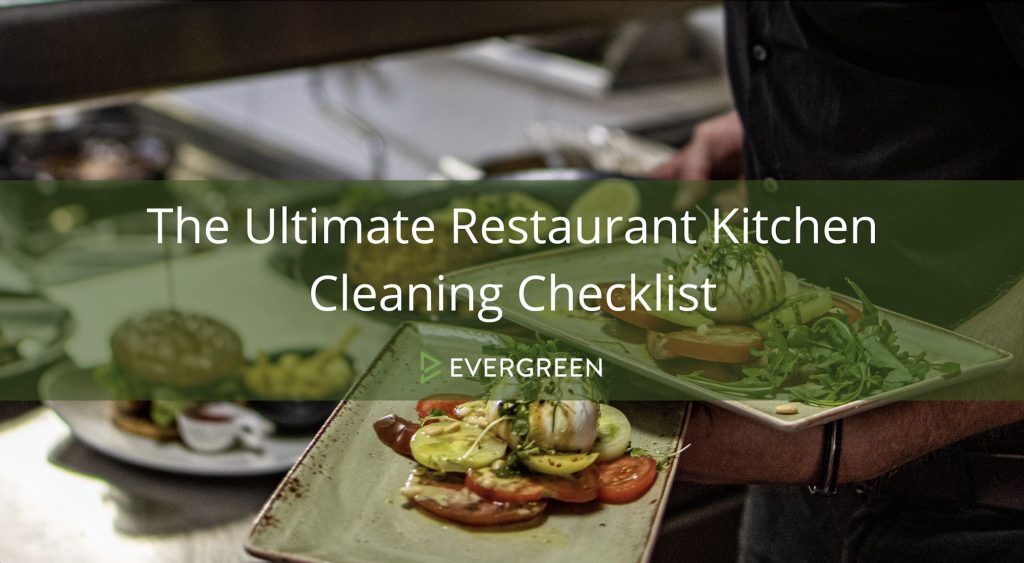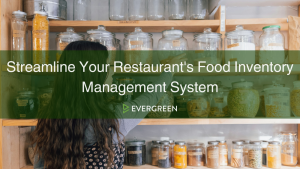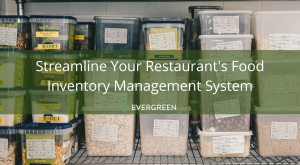The Ultimate Restaurant Kitchen Cleaning Checklist

By keeping your kitchen clean, you and your staff ensure that the food you serve is safe and free from harmful bacteria or contaminants. Regular cleaning helps maintain a hygienic environment and prevent cross-contamination.
Additionally, a clean kitchen contributes to a positive dining experience, customer satisfaction, and repeat business. When customers see a clean and well-maintained kitchen, they are more likely to trust the establishment and have confidence in the quality of the food being served.
On the other hand, dirty kitchens may lead to negative online reviews and damage the restaurant’s reputation, ultimately affecting its success and profitability. Here’s what you need to know to keep your kitchen clean regardless of the season or size of your team.
Key Areas to Clean in a Restaurant Kitchen
There are several key areas that need to be cleaned in a restaurant kitchen to ensure cleanliness and prevent the growth of bacteria or invasion of pests. Countertops, cutting boards, and food preparation areas should be cleaned and sanitized regularly to prevent cross-contamination.
Dishwashing areas, sinks, and drains need to be kept clean to prevent bacterial growth and maintain hygiene. Check out our complete, ultimate list of restaurant kitchen cleaning checklists now:
Countertop Cleaning Checklist
Supplies needed:
- Brush
- Bucket
- Non-abrasive scrubbing pads
- Disinfectant
- Detergent
- Water
- Gloves
- Clean cloths or rags
Recommended frequency:
- Daily
Steps:
- Preparation: Before starting, make sure to wear gloves.
- Remove Debris: Clear off any loose food particles, utensils, or other items from the countertop.
- Wipe Down: Using a clean cloth, dampen it with warm water and wipe the entire countertop surface to remove any light grime or oil residue.
- Apply Detergent: Mix a mild detergent with warm water in the bucket. Dip a cloth or non-abrasive scrubbing pad into the solution.
- Scrub: Gently scrub the countertop with the detergent solution, paying special attention to sticky or greasy spots.
- Reach Corners: Use the brush to scrub corners, edges, and other hard-to-reach areas to ensure a thorough cleaning.
- Rinse: With a cloth dampened in clean water, wipe down the countertop to remove any detergent residue.
- Disinfect: Spray or wipe down the countertop with a food-safe disinfectant. This step ensures the removal of any lingering bacteria or germs.
- Dry: Using a dry cloth, thoroughly dry the countertop to prevent any watermarks or potential mold growth.
- Inspect the Countertop: Take a moment to inspect the countertop for any missed spots or residues. If any areas need further cleaning, go over them once more.
Cutting Board Cleaning Checklist
Supplies needed:
- Gloves
- Soft brush or scrubbing pad
- Detergent
- Food-safe disinfectant
- Baking soda or white vinegar
- Spray bottle
- Clean cloths or rags
- Spatula or bench scraper
- Water
Recommended frequency:
- Daily
Steps:
- Preparation: Begin by wearing gloves. Assemble your supplies and start by wearing gloves.
- Scrape Off Residues: Using a spatula or bench scraper, gently remove any leftover food particles or residues from the cutting board.
- Rinse: Quickly rinse the board under running water to remove surface-level dirt and grime.
- Soap Up: Apply a small amount of mild detergent to your scrubbing pad or brush.
- Scrub: Gently scrub the entire surface of the cutting board. Ensure you pay attention to knife grooves or deep cuts where food particles can hide.
- Rinse Again: Thoroughly rinse the board to ensure all detergent is washed away.
- Disinfect: To kill any lingering germs, wipe or spray the board with a food-safe disinfectant. If you’re using a wooden board, a mixture of white vinegar and water can act as a natural disinfectant.
- Deep Clean (if necessary): If your board has stubborn stains or smells, sprinkle it with baking soda and scrub. Alternatively, for wooden boards, you can rub them with half a lemon to refresh and naturally disinfect.
- Dry: Stand the board on its edge to air-dry, ensuring it’s thoroughly dry before storing to avoid mold and mildew.
- Inspect: Before storage, check the cutting board for any remaining residues or stains. If any spots are missed, clean them again.
Food Prep Area Checklist
Supplies needed:
- Gloves
- Cleaning cloths
- Detergent
- Scrubbing brush
- Disinfectant
- Trash bag
- Spray bottle
- Water
Recommended frequency:
- Daily
Steps:
- Preparation: Assemble needed supplies and start with your gloves.
- Clear the Area: Remove all utensils, cutting boards, bowls, and other tools from the prep area.
- Toss Waste: Dispose of any food scraps or waste into the trash bin.
- Wipe Down: Dampen a cloth with warm water and wipe the entire prep area to remove superficial dirt or spills.
- Apply Detergent: Mix a mild detergent with water. Using a cloth or scrubbing brush, clean the entire surface, focusing on stained or sticky spots.
- Rinse: Wipe down the area with a clean, damp cloth to remove detergent residues.
- Disinfect: Use a food-safe disinfectant to spray or wipe down the entire prep area. This step ensures all bacteria and germs are eliminated.
- Dry: Using a clean, dry cloth, thoroughly dry the prep area to prevent water marks or mold growth.
- Organize: Return all tools and utensils to their designated places, ensuring they’re clean and ready for the next use.
- Inspect the prep area: Take a final look at the prep area to ensure it’s spotless and free from any residues. If any areas are overlooked, clean them once more.
Oven Cleaning Checklist
Supplies needed:
- Gloves
- Soft brush
- Non-abrasive scrubbing pad
- Oven cleaner
- Baking soda
- Clean cloths
- Bowl
- Bucket
- Water
Recommended frequency:
- Daily
Steps:
- Safety First: Ensure the oven is off and has cooled down completely to avoid burns. Put your gloves on.
- Preparation: Wear gloves and gather the necessary supplies.
- Remove Racks: Slide out oven racks and set them aside.
- Brush Debris: Use a soft brush to sweep out burnt crumbs or loose debris from the oven’s base.
- Apply Cleaner: Spread the oven cleaner or your baking soda mixture evenly across the interior surfaces, avoiding the heating elements or gas outlets.
- Let Sit: Allow the cleaner to sit for the time specified on the label or, if using a baking soda mixture, let it sit for at least 30 minutes to loosen grime.
- Scrub: Gently scrub tough spots with a scrubbing pad, taking care not to scratch any surfaces.
- Wipe Clean: Using a damp cloth, wipe away the cleaner and any remaining residues from all surfaces.
- Clean Racks: Scrub the oven racks with detergent, rinse thoroughly, and then return them to the oven once they’re dry.
- Inspect and Air Out: Open the oven door to air it out for a few minutes, then check to ensure all areas are clean and free of residues. If any spots are missed, clean them again.
Grill Cleaning Checklist
Supplies needed:
- Gloves
- Grill brush
- Scraper
- Mild detergent
- Bucket
- Clean cloths
- Water
- Spray bottle
Recommended frequency:
- Daily and/or as often as needed
Steps:
- Safety First: Ensure the grill is turned off and has cooled enough to be touched but is still slightly warm. A warm grill is easier to clean than a cold one.
- Preparation: Collect the necessary supplies and put your gloves on.
- Brush Grates: Using the grill brush, scrub the grates vigorously to remove burnt-on food and grease.
- Scrape: Utilize the scraper for any stubborn residues that the brush can’t remove.
- Remove Grates: If possible, lift out the grates and set them aside.
- Clean Underneath: Brush and scrape away any debris or grease from the burners, flavorizer bars, or bottom of the grill.
- Soapy Water: Fill a bucket with water and add a squirt of mild detergent. Dip a cloth into the soapy water and scrub the grates thoroughly.
- Rinse: Spray the grates with a water hose or pour clean water over them to wash away soap and debris. If the grill is indoors or not near a hose, use a bucket of clean water and a cloth.
- Dry: Wipe down the grates with a clean cloth and let them air dry for a few minutes before reassembling.
- Inspect the Grill: Once the grill is reassembled, give it a final check to ensure no residues or soap are left. If any areas are missed, clean them again.
Fryer Cleaning Checklist
Supplies needed:
- Warm water
- Gloves
- Detergent
- Bucket
- Clean, dry surface
- Clean cloths or rags
Recommended frequency:
- Daily and/or as often as needed
Steps:
Safety First: Turn off the fryer and ensure it’s completely cool. Hot oil can and will cause severe burns.
- Drain Oil: Carefully drain the used oil into an approved oil disposal container.
- Remove Parts: Take out any removable parts, such as baskets, racks, or heating elements.
- Soak and Scrub: Fill the fryer with warm water and a mild detergent. Let it soak for a few minutes. Then, using a non-abrasive scrub pad, clean the interior thoroughly.
- Rinse: Empty the soapy water and rinse the fryer with clean water until all detergent residues are gone.
- Clean Exterior: Wipe down the outside of the fryer with a damp cloth to remove grease and fingerprints.
- Dry the Fryer: Thoroughly dry all parts of the fryer, inside and out, using a clean cloth. This step is essential to prevent any water from mixing with the oil upon next use.
- Reassemble: Once everything is clean and dry, reassemble the fryer, ensuring each component is correctly placed and secure.
Kitchen Floor Cleaning Checklist
Supplies needed:
- Mop
- Bucket
- Floor cleaning liquid or solution
- Broom
- Dustpan
- Gloves
- Scrubbing brush
- Water
- Clean cloths
Recommended frequency:
- Multiple times weekly and/or as often as needed
Steps:
- Safety Measures: Place “Wet Floor” signs at all entrances and areas being cleaned to prevent slips and falls.
- Gather Supplies: Assemble your mop, bucket, floor cleaning solution, broom, and dustpan.
- Sweep Up: Using the broom, thoroughly sweep the entire floor area to remove loose debris, dirt, and food particles.
- Pre-treat Stains: Before mopping, spot treat any stubborn stains or spills with a little cleaning solution.
- Prepare Mop Bucket: Fill the bucket with warm water and mix in the recommended amount of floor cleaning solution.
- Mop: Begin mopping from the furthest corner, working your way towards the exit. This way, you won’t walk over freshly cleaned areas.
- Empty and Rinse: Once the entire floor is cleaned, empty the mop bucket. Rinse the mop with clean water and wring it out well.
- Allow to Dry: Ensure the floor dries completely before removing the “Wet Floor” signs. To speed up drying, consider using fans or leaving windows and doors open for more direct airflow.
Kitchen Wall Cleaning Checklist
Supplies needed:
- Warm water
- Bucket
- Detergent
- Sponges
- Soft, clean cloths
- Ladder (optional)
Recommended frequency:
- Weekly and/or as often as needed
Steps:
- Get Ready: Collect soft cloths, sponges, a bucket, mild detergent, and warm water.
- Safety First: Position “Wet Paint” or “Cleaning in Progress” signs to alert staff and guests. If needed, use a sturdy step ladder to reach higher areas.
- Dust Off: Using a dry cloth, gently wipe the walls to remove any settled dust or cobwebs, starting from the top and working your way down.
- Prepare Cleaning Solution: In the bucket, mix warm water with a few drops of mild detergent to create a gentle cleaning solution.
- Test Spot: Before cleaning the entire wall, test a small, inconspicuous area with the solution to ensure it doesn’t damage or discolor the paint or wall covering.
- Wipe Down: Dampen a cloth or sponge with the cleaning solution and gently wipe the walls, paying attention to spots with visible stains or splatters. Do not oversaturate the walls.
- Rinse: Wet a clean cloth with plain water and wring it out well. Wipe the walls to remove any detergent residue.
- Dry and Inspect: Using a dry cloth, pat the walls dry. Then, inspect for any missed spots and clean them as needed.
Kitchen Ceiling Cleaning Checklist
Supplies needed:
- Dusters
- Soft, clean cloths
- Detergent
- Bucket
- Warm water
- Personal protective equipment (PPE) for eyes
Recommended frequency:
- Weekly and/or as often as needed
Steps:
- Gather Your Supplies: Assemble extendable dusters, soft cloths, a bucket, mild detergent, warm water, and protective eyewear (to prevent debris or cleaning solution from falling into your eyes).
- Prioritize Safety: Set up “Cleaning in Progress” signs. Use a sturdy ladder or scaffold to safely reach the ceiling. Ensure it’s on even ground and secure.
- Dust First: Using an extendable duster, gently dust the ceiling to remove any loose particles, starting from one corner and working your way across.
- Prepare Cleaning Mix: Combine warm water with a mild detergent in the bucket to create a light cleaning solution.
- Spot Test: Before cleaning the whole ceiling, apply a small amount of the solution to an inconspicuous area to ensure it doesn’t cause discoloration or damage.
- Clean: Dampen a cloth with the cleaning solution. Wring it out so it’s not dripping wet and gently wipe the ceiling. Work in sections, ensuring you don’t oversaturate the surface.
- Rinse: Moisten a clean cloth with just water and wring it out well. Wipe down the cleaned areas of the ceiling to remove any soap residue.
- Inspect and Dry: Once the entire ceiling is cleaned, review your work. Touch up any missed spots. Allow the ceiling to air dry or pat dry with a clean cloth if needed.
Frequency of Cleaning a Restaurant Kitchen
The frequency of cleaning your restaurant kitchen depends on the specific tasks and areas that need to be cleaned. Daily tasks include wiping down surfaces, cleaning equipment, and sanitizing food contact areas. These tasks should be performed at the end of each day to ensure a clean and hygienic environment for the next day’s operations.
Weekly or biweekly tasks include deep cleaning of ovens, grills, and refrigerators, as well as thorough floor cleaning. These tasks require more time and effort but are essential to maintain the cleanliness and functionality of the kitchen.
Monthly tasks include cleaning vents, checking fire suppression systems, and descaling equipment. Regular deep cleaning and maintenance are essential to prevent the buildup of grease and dirt, which can pose health and safety risks. Schedule all major tasks in advance so your team is prepared and there are no surprises.
Recommended Cleaning Products and Equipment
When cleaning a restaurant kitchen, it’s important to use appropriate cleaning products and equipment to ensure effective and safe cleaning. EPA-registered disinfectants that are safe for food contact surfaces are recommended to avoid any potential contamination. Additionally, eco-friendly cleaning solutions can be an effective choice to minimize environmental impact.
Adequate cleaning equipment, such as scrub brushes, mops, and microfiber cloths, should be used for cleaning work as needed to ensure efficient and thorough cleaning. It’s also important to have proper storage and labeling of cleaning products to ensure safety and easy access.
Tips for Effective Kitchen Surface and Equipment Cleaning
Effective kitchen surface and equipment cleaning involves following procedures properly, including those laid out Different surfaces, such as stainless steel, tile, and laminate may require specific cleaning methods. It’s important to remove debris and grease before applying cleaning solutions to ensure their effectiveness.
For cleaning equipment, such as ovens and fryers, appropriate tools and techniques should be used. Degreasers can be effective in removing built-up grease. After cleaning, proper sanitization and disinfection should be done to eliminate bacteria and viruses. Regular inspection and maintenance of equipment should also be done to identify any issues or signs of wear and tear.
Preventing Pest Infestations through Proper Kitchen Cleaning
Proper kitchen cleaning is essential in preventing pest infestations. A clean kitchen helps to eliminate food sources and breeding grounds for pests. It’s essential to store food properly and dispose of waste promptly to prevent attracting pests.
Regular inspection and sealing of potential entry points for pests–such as cracks and gaps–can help prevent their entry into the kitchen. Keeping the kitchen area dry and clean also discourages pests from infesting. Consider partnering with professional pest control services for regular inspections and preventative measures to ensure a pest-free kitchen environment.
Food Safety Regulations and Kitchen Cleanliness
Health departments enforce strict regulations regarding kitchen cleanliness and food safety. Restaurants and various hospitality establishments that don’t comply with these regulations may face fines, closures, or other legal consequences. Proper cleaning procedures and documentation like these checklists are essential to meet food safety standards.
Training staff on food handling, storage, and cleaning practices is crucial for compliance with food safety regulations. Regular internal audits and inspections can help identify areas for improvement and ensure compliance with industry regulations. By prioritizing your kitchen’s cleanliness and following food safety regulations, you’ll protect the health and well-being of your customers.
Benefits of Implementing a Kitchen Cleaning Routine
Implementing a regular kitchen cleaning checklist has several benefits for restaurant owners and staff. A structured cleaning checklist ensures that all necessary cleaning tasks are completed consistently. This improves efficiency and productivity by outlining specific cleaning responsibilities for each staff member.
Having a cleaning checklist reduces the risk of tasks being overlooked or forgotten during busy periods. It also boosts employee morale and teamwork by fostering a sense of shared responsibility for maintaining cleanliness.
Training Staff in Proper Kitchen Cleaning Procedures
Training staff in proper kitchen cleaning procedures is essential for maintaining cleanliness and hygiene standards. Provide your staff comprehensive training on all proper cleaning techniques, which goes beyond the content found in our checklists and includes all staff involved in keeping a clean building.
Leading by example and demonstrating the importance of cleanliness to the entire staff is also crucial. Establishing a culture of cleanliness by promoting open communication and addressing any concerns or challenges further reinforces the importance of proper kitchen cleaning procedures.
Disclaimer: The cleaning checklist information and its surrounding information provided herein is intended solely for informational and educational purposes and should not be relied upon as specific advice, be it legal, medical, or financial. While every effort has been made to ensure accuracy, users are advised to consult with appropriate professionals regarding their specific circumstances before making any decisions or taking action based on this content. Evergreen, its staff, affiliates, and partners do not claim any liability for the results, outcomes, nor effects of this information or its use in any way.


